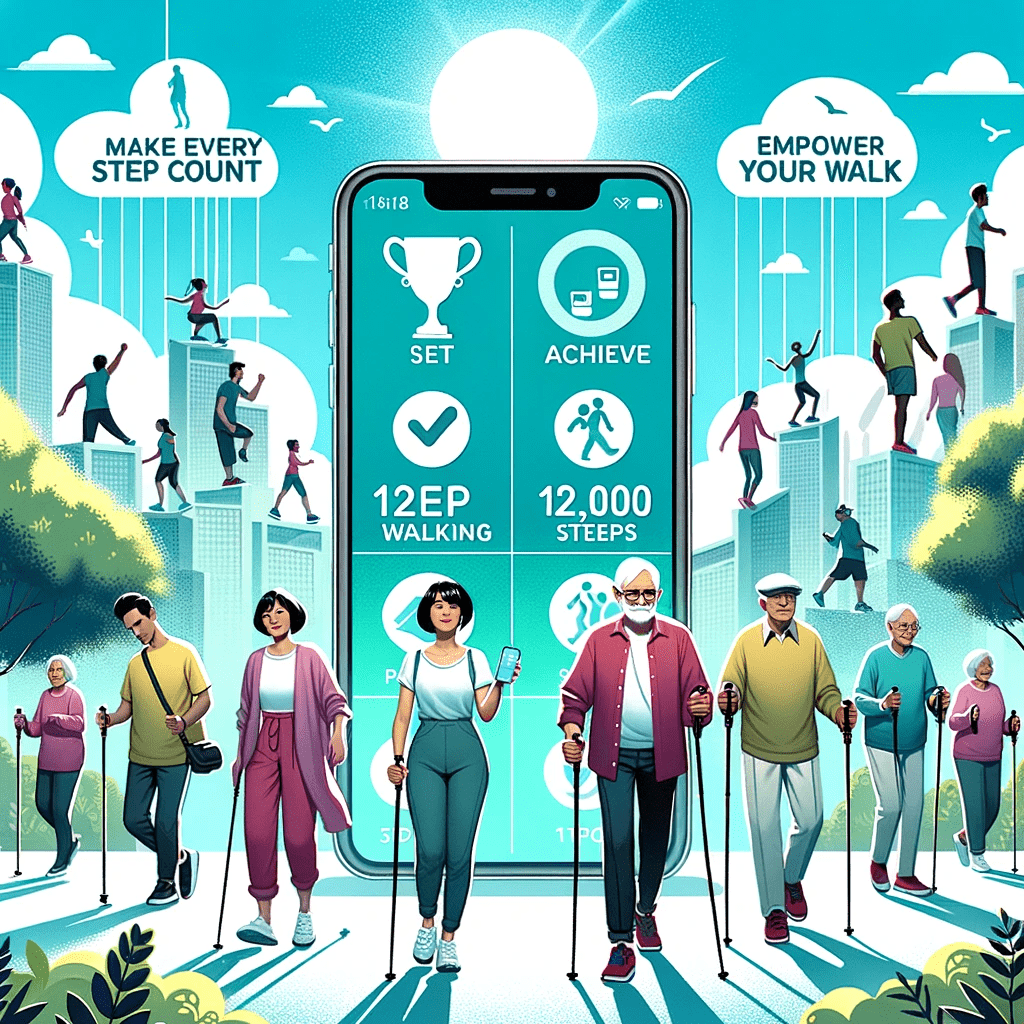
Walking plays a crucial role in managing diabetes. It has various benefits, including controlling blood sugar levels, managing weight, and reducing the risk of complications. The recommended duration for walking is at least 150 minutes of moderate to vigorous activity per week, spread across five days. You should consult a healthcare professional before starting an exercise program. Furthermore, monitoring blood sugar levels during exercise and gradually increasing the steps per day can be beneficial for individuals with diabetes. How Many Km Should a Diabetes Walk
🔍 Seeking a breakthrough in Type 2 Diabetes management?
Discover our expert insights and innovative approaches on ‘How to Cure Diabetes’.
Click to transform your health journey today!

What you\'ll find in this article?
- Benefits of Walking for Diabetes - How Many Km Should a Diabetes Walk?
- Recommended Duration and Intensity of Walking - How Many Km Should a Diabetes Walk?
- Tips for Effective Walking Routine - How Many Km Should a Diabetes Walk?
- Walking as Part of Diabetes Management - How Many Km Should a Diabetes Walk?
- Privacy Policy (No Privacy Policy section) - How Many Km Should a Diabetes Walk?
Benefits of Walking for Diabetes - How Many Km Should a Diabetes Walk?
Regular physical activity, such as walking, offers numerous benefits for individuals with diabetes. It not only helps in managing blood sugar levels but also contributes to weight management and overall lifestyle improvements. Additionally, walking plays a crucial role in reducing various risk factors associated with diabetes complications.
Impact on Blood Sugar Levels
Walking has a positive impact on blood sugar levels in individuals with diabetes. Engaging in regular walking exercises helps the body utilize glucose more effectively and enhances insulin sensitivity. As a result, better regulation of blood sugar levels occurs, reducing the risk of hyperglycemia.
Weight Management and Lifestyle
- Walking is an effective way to manage weight for individuals with diabetes. It helps burn calories, improve metabolism, and promote weight loss, which is important for diabetes management.
- Moreover, walking as a regular physical activity contributes to an overall healthier lifestyle. It helps maintain a healthy body weight, improves cardiovascular health, and enhances overall well-being.
Reduction in Risk Factors
Walking for diabetes not only helps manage blood sugar levels and weight but also plays a significant role in reducing various risk factors associated with diabetes complications. Regular walking can help:
- Lower the risk of heart disease and stroke, which are common complications of diabetes.
- Improve blood pressure control, thereby reducing the risk of hypertension.
- Enhance lipid profile by increasing HDL cholesterol levels and reducing triglycerides.
- Minimize insulin resistance, a key factor in the development of type 2 diabetes.
By incorporating walking into the daily routine, individuals with diabetes can experience these significant benefits, improving their overall health and diabetes management.
Explore our specialized services in diabetes care 🌟.
From personalized diet plans to effective exercise routines, we have what you need to take control of Type 2 Diabetes.
Visit our services page now!








Recommended Duration and Intensity of Walking - How Many Km Should a Diabetes Walk?

When it comes to managing diabetes, the duration and intensity of walking play a crucial role in reaping the benefits. Here are some key considerations to keep in mind:
Minimum Exercise Guidelines for Diabetes
Healthcare professionals recommend individuals with diabetes to engage in at least 150 minutes of moderate to vigorous physical activity per week, spread across five days. This translates to approximately 30 minutes of walking per day. By meeting these minimum exercise guidelines, you can improve your overall health and better control your blood sugar levels.
Incorporating Regular Physical Activity
To make walking a regular part of your routine, find ways to incorporate physical activity into your daily life beyond the recommended duration. This can include taking the stairs instead of the elevator, parking farther away from your destination to get more steps in, or even doing household chores. Remember, every step counts towards improving your health.
Adjusting Duration and Intensity for Individuals with Type 2 Diabetes
For individuals with type 2 diabetes, it may be necessary to adjust the duration and intensity of walking based on their individual needs and capabilities. Start with smaller amounts of steps and gradually increase them each week to reach the goal of 10,000 steps per day. You can also add variety to your walking routine by incorporating hills, carrying weights, or alternating between fast and slow walking. Remember to consult with your healthcare professional to determine the appropriate level of intensity and duration for your specific circumstances.
By following these recommendations and customizing your walking routine to fit your needs, you can effectively manage your diabetes, improve blood sugar control, and enhance your overall well-being.
Tips for Effective Walking Routine - How Many Km Should a Diabetes Walk?

Tracking Steps and Setting Goals
Tracking your steps and setting goals can help you stay motivated and monitor your progress. Use a pedometer or a fitness tracker to count your steps throughout the day. Set realistic goals based on your current fitness level and gradually increase them over time. Aim for at least 10,000 steps per day to achieve maximum benefits. Breaking down your goal into smaller increments can make it more achievable and less overwhelming.
Incorporating Different Types of Walking
Varying your walking routine can keep it interesting and challenge different muscle groups. Besides regular brisk walking, try incorporating other forms of walking. Power walking involves taking longer and quicker strides to increase intensity. Walking uphill or on varied terrain can help strengthen your leg muscles and improve cardiovascular fitness. You can also consider incorporating interval training, which involves alternating between fast-paced walking and slower recovery periods.
Ensuring Safety and Monitoring Blood Sugar Levels
Prioritize your safety while walking, especially if you have diabetes. Wear comfortable shoes with proper support to prevent foot injuries. Stay hydrated and carry a source of fast-acting carbohydrates, such as glucose tablets, in case of low blood sugar levels. Monitor your blood sugar levels before, during, and after walking, especially if you take medication for diabetes. Make necessary adjustments to your medication or speak with your healthcare professional if needed.
By implementing these tips into your walking routine, you can optimize the benefits of exercise for diabetes management and overall well-being. Remember to consult with your healthcare professional before making any significant changes to your exercise regimen.
Walking as Part of Diabetes Management - How Many Km Should a Diabetes Walk?

Walking plays a crucial role in managing diabetes by providing numerous benefits to individuals with this condition. Regular physical activity, including walking, can significantly impact blood sugar levels, aid in weight management, and reduce the risk factors associated with diabetes.
The Role of Walking in Managing Diabetes
Studies have shown that walking positively impacts blood sugar control in individuals with diabetes. It helps improve insulin sensitivity, allowing the body to effectively utilize glucose and maintain stable blood sugar levels. By engaging in regular walking, individuals with diabetes can enhance their overall glycemic control and reduce the risk of complications.
Benefits of Regular Physical Activity for Diabetes
Regular physical activity, such as walking, provides numerous benefits for individuals with diabetes. It promotes weight management, helps lower blood pressure, and improves cardiovascular health. Additionally, people with diabetes who engage in regular physical activity often experience better mood, increased energy levels, and improved overall well-being.
Combining Walking with Medication and Other Treatments
Walking can be a valuable addition to diabetes management when combined with appropriate medication and other treatments. It can help reduce the dosage of diabetes medications, particularly in individuals with type 2 diabetes. However, it is crucial to consult with healthcare professionals to ensure a comprehensive and personalized approach to diabetes management.
- Individuals can integrate regular walking routines with medications, insulin therapy, and dietary changes to optimize diabetes management.
- Monitoring blood sugar levels before and after walking sessions helps individuals understand the impact of physical activity on their glycemic control.
- Consulting with healthcare professionals is essential to adjust medications or insulin regimens, if needed, to account for the effects of walking on blood sugar levels.
By incorporating walking into their diabetes management routine, individuals can enhance their overall health, control blood sugar levels, and reduce the risk of complications associated with diabetes.
Privacy Policy (No Privacy Policy section) - How Many Km Should a Diabetes Walk?
At diabetescure4u.com, we are committed to protecting your privacy and ensuring the security of your personal information. As a reputable website, we understand the importance of maintaining the confidentiality of any data you provide to us. This Privacy Policy outlines our practices regarding the collection, use, and disclosure of your information when you visit our site.
Data Collection:
- We collect information that you voluntarily provide to us, such as your name and email address, when you subscribe to our newsletter or contact us through our contact form.
- We may also collect non-personal information, including your IP address, browser type, and operating system, to improve our website's functionality and performance.
Usage:
- We use the information we collect to enhance your browsing experience on our website and to provide you with relevant content and resources.
- We may use your email address to send you periodic updates, promotional materials, or other information related to the topic of this website unless you opt out.
- We will never sell, share, or rent your personal information to any third parties without your explicit consent.
Data Protection:
- We employ industry-standard security measures to protect the confidentiality and integrity of your data. However, please note that no method of transmission over the internet or electronic storage is entirely secure.
- We cannot guarantee absolute security, but we strive to use commercially acceptable means to protect your personal information.
Third-Party Links:
- Our website may contain links to other external sites not operated by us. Once you click these links, they direct you to third-party websites over which we have no control.
- We encourage you to review the Privacy Policies of these third-party sites as their practices may differ from ours.
Children's Privacy:
- This website, intended for adults, does not knowingly collect personal information from children under the age of 13. If we discover that we have collected personal information from a child, we will delete it immediately.
Changes to this Policy:
- We reserve the right to modify this Privacy Policy at any time. This page will reflect any changes, and the modified date at the top will indicate when the last update occurred. We encourage you to review this Privacy Policy periodically.
If you have any questions or concerns about our Privacy Policy, please contact us through the provided contact information on our website. Your privacy is important to us, and we commit to addressing any concerns you may have.
✨ Other articles you might be interested in:




